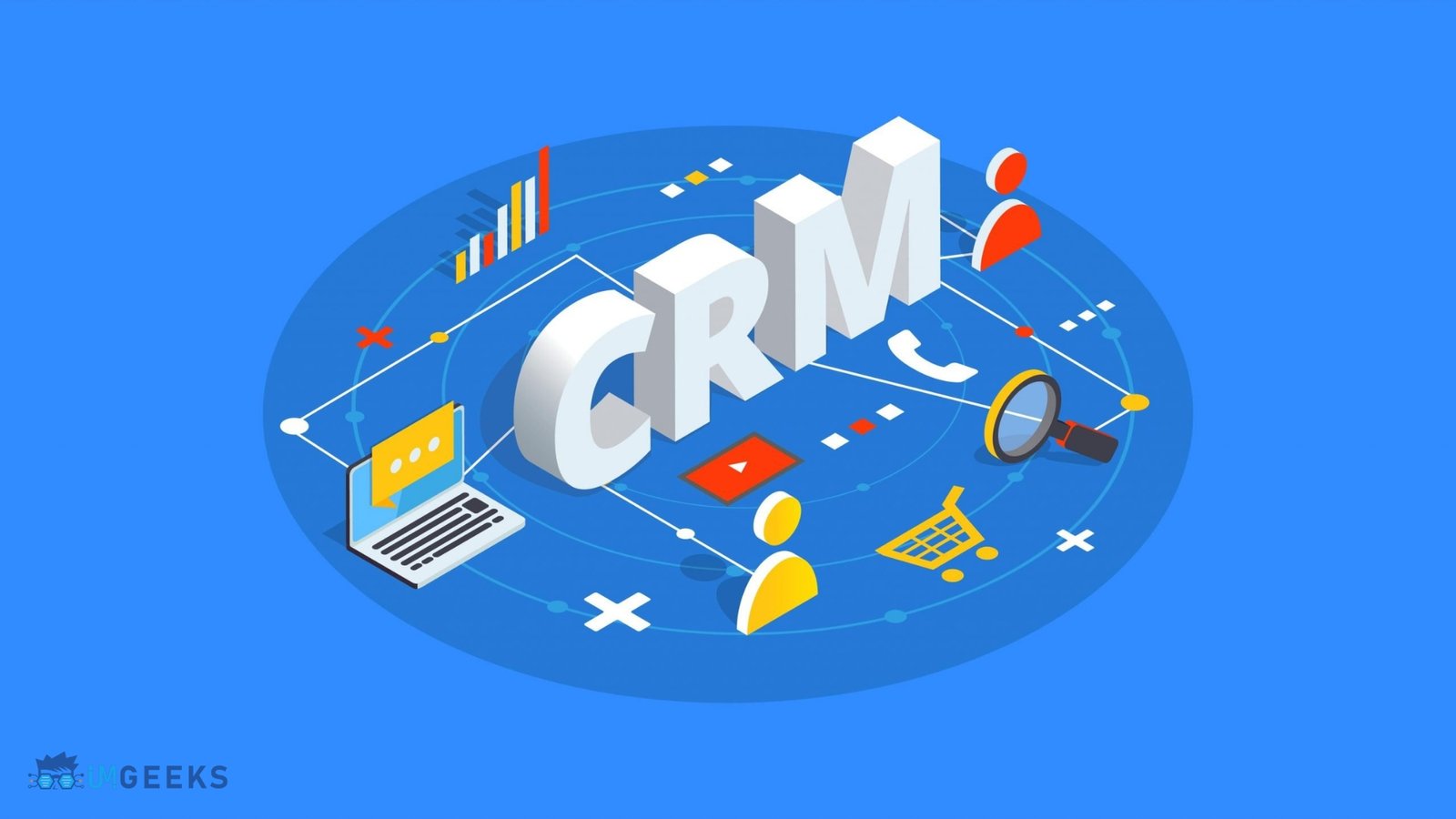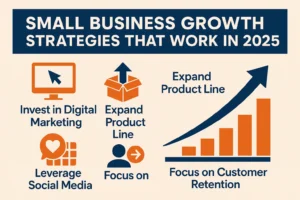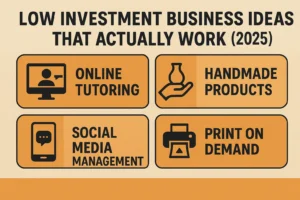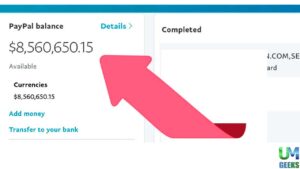B2B software has revolutionized how businesses operate, communicate, and grow in today’s digital landscape. From small startups to enterprise corporations, companies across industries rely on business-to-business software solutions to streamline operations, enhance productivity, and maintain competitive advantages.
The global B2B software market continues to expand rapidly, with organizations investing billions annually in tools that promise efficiency gains and improved bottom lines. Whether you’re looking to automate workflows, manage customer relationships, or optimize supply chains, the right B2B software can transform your business operations fundamentally.
Understanding the vast ecosystem of available solutions, their benefits, and implementation strategies has become crucial for business leaders. This comprehensive guide explores everything you need to know about it, helping you make informed decisions that drive sustainable growth and operational excellence.
What is B2B Software?
B2B software refers to applications, platforms, and digital tools designed explicitly for business-to-business transactions and operations. Unlike consumer-focused software, these solutions address complex organizational needs, from enterprise resource planning to sophisticated analytics platforms.
These software solutions typically feature robust security measures, scalability options, and integration capabilities that support business growth. They’re built to handle multiple users, departments, and intricate workflows that characterize modern business environments.
The core purpose of software extends beyond simple task automation. These platforms enable strategic decision-making through data insights, facilitate collaboration across teams, and create seamless connections between different business functions.
Key Benefits of B2B Software Solutions
Enhanced Operational Efficiency
Modern B2B software eliminates manual processes that consume valuable time and resources. Automation features handle repetitive tasks, allowing employees to focus on strategic initiatives that drive business value. Companies implementing comprehensive software solutions often report significant productivity improvements. These gains stem from streamlined workflows, reduced human error, and faster decision-making processes enabled by real-time data access.
Improved Data Management and Analytics
B2B software platforms centralize business data, creating single sources of truth for organizations. This consolidation enables better reporting, more accurate forecasting, and data-driven decision-making across all business levels. Advanced analytics capabilities built into modern solutions provide actionable insights that were previously impossible to obtain. Companies can identify trends, optimize processes, and predict future outcomes with greater accuracy.
Cost Reduction and ROI Optimization
While initial investments in software may seem substantial, the long-term cost savings typically justify expenses through multiple channels. Reduced manual labor, fewer errors, and improved efficiency create measurable financial benefits. Many organizations achieve positive returns on investment within the first year of implementation. These returns compound over time as teams become more proficient with their tools and processes become increasingly optimized.
Scalability and Growth Support
Quality B2B software grows with your business, accommodating increased users, data volumes, and complexity without requiring complete system overhauls. This scalability ensures technology investments remain valuable as companies expand. Cloud-based solutions particularly excel in this area, offering flexible pricing models and infrastructure that adapt to changing business needs seamlessly.
Types of B2B Software Categories
Customer Relationship Management (CRM) Software
CRM platforms represent one of the most popular software categories, helping businesses manage customer interactions, sales processes, and relationship development. These tools centralize customer data and automate communication workflows. Leading CRM solutions offer features like lead tracking, sales pipeline management, and customer service integration. They enable sales teams to work more efficiently while providing managers with visibility into performance metrics.
Enterprise Resource Planning (ERP) Systems
ERP software integrates core business processes into unified platforms, from accounting and human resources to supply chain management and manufacturing. These comprehensive B2B software solutions eliminate data silos and improve cross-departmental collaboration. Modern ERP systems offer modular architectures, allowing businesses to implement specific components based on their needs and budget constraints. Cloud-based options have made these powerful tools accessible to smaller organizations.
Marketing Automation Platforms
Marketing automation B2B software helps businesses nurture leads, execute campaigns, and measure marketing effectiveness across multiple channels. These platforms integrate email marketing, social media management, and lead scoring functionalities. Advanced marketing automation tools provide behavioral tracking, personalization capabilities, and sophisticated analytics that enable marketers to optimize campaigns and improve conversion rates continuously.
Project Management and Collaboration Tools
Project management B2B software facilitates team coordination, task tracking, and resource allocation across complex initiatives. These platforms offer visual project timelines, communication tools, and progress monitoring capabilities. Modern solutions emphasize user experience and mobile accessibility, ensuring teams can collaborate effectively regardless of location or device preferences.
Financial Management Software
Financial B2B software encompasses accounting platforms, expense management tools, and financial planning applications. These solutions automate bookkeeping tasks, ensure compliance, and provide financial insights for strategic planning. Integration capabilities allow financial software to connect with other business systems, creating comprehensive views of organizational performance and cash flow patterns.
How to Choose the Right B2B Software
Assess Your Business Needs
Successful B2B software selection begins with thorough needs assessment. Identify specific pain points, workflow inefficiencies, and strategic objectives that technology could address effectively. Document current processes and envision how improved systems might transform operations. This analysis provides the foundation for evaluating potential solutions and measuring implementation success.
Evaluate Integration Capabilities
Modern businesses rely on multiple software applications, making integration capabilities crucial selection criteria. API availability, pre-built integrations, and data export/import functionalities determine how well new solutions will fit into your technology ecosystem. Poor integration choices often lead to data silos and workflow disruptions.
Consider Scalability Requirements
Select B2B software that accommodates current needs while supporting future growth scenarios. Consider user limits, data storage capacities, and feature availability across different pricing tiers. Scalability extends beyond user counts to include functional capabilities, geographic expansion support, and performance maintenance under increased loads.
Analyze Total Cost of Ownership
B2B software costs extend beyond initial licensing fees to include implementation, training, maintenance, and ongoing support expenses. Calculate total cost of ownership over realistic timeframes to make accurate comparisons. Factor in productivity gains, cost savings, and revenue improvements when evaluating software investments. The cheapest option rarely provides the best long-term value.
Review Security and Compliance Features
Enterprise B2B software must meet stringent security requirements and industry compliance standards. Evaluate data encryption, access controls, audit trails, and certification compliance before making final decisions. Consider where data will be stored, who has access, and how the vendor handles security updates and incident response. Security breaches can be catastrophically expensive.
Implementation of Best Practices for B2B Software
Develop Comprehensive Implementation Plans
Successful B2B software implementations require detailed planning that addresses timelines, resource allocation, and change management strategies. Create realistic schedules that account for potential complications and learning curves. Involve key stakeholders in planning processes to ensure buy-in and identify potential obstacles early. Communication throughout implementation phases keeps projects on track and manages expectations.
Provide Adequate Training and Support
User adoption determines B2B software success more than feature sophistication. Invest in comprehensive training programs that address different learning styles and proficiency levels across your organization. Ongoing support structures, including internal champions and vendor resources, help users maximize software value and overcome implementation challenges.
Monitor Performance and Optimize Usage
Track key performance indicators to measure B2B software impact on business objectives. Regular performance reviews identify optimization opportunities and justify continued investments. User feedback provides valuable insights into workflow improvements and feature utilization patterns. This information guides configuration adjustments and training priorities.
Plan for Data Migration
Data migration represents one of the most critical aspects of B2B software implementation. Develop detailed migration strategies that ensure data integrity while minimizing business disruption. Test migration processes thoroughly before full implementation and maintain backup systems until new platforms prove stable and reliable.
Future Trends in B2B Software
Artificial Intelligence Integration
AI capabilities are becoming standard features in B2B software across all categories. Machine learning algorithms optimize processes, predict outcomes, and provide intelligent recommendations that enhance decision-making. Natural language processing enables more intuitive user interfaces, while predictive analytics helps businesses anticipate market changes and customer behaviours more accurately.
Mobile-First Design Approaches
Mobile accessibility has evolved from a nice-to-have to an essential requirement for B2B software solutions. Modern platforms prioritize mobile experiences that enable productivity regardless of location or device. Progressive web applications and native mobile apps provide full functionality on smartphones and tablets, supporting increasingly distributed workforces.
Enhanced Security Measures
Cybersecurity threats continue evolving, driving B2B software vendors to implement more sophisticated protection measures. Zero-trust architectures, advanced encryption, and behavioural analytics have become standard security features. Compliance automation helps businesses meet regulatory requirements while reducing administrative burdens associated with manual compliance processes.
Low-Code and No-Code Platforms
Low-code and no-code B2B software platforms democratize application development, enabling business users to create custom solutions without extensive programming knowledge. These platforms accelerate innovation while reducing IT departments’ workloads. They allow rapid prototyping and iterative improvement of business processes.
Industry-Specific B2B Software Solutions
Healthcare Technology Platforms
Healthcare B2B software addresses unique industry requirements, including HIPAA compliance, electronic health records management, and patient communication systems. These specialized solutions integrate with medical devices and insurance systems. Telemedicine platforms, practice management software, and clinical decision support tools represent growing segments within healthcare technology markets.
Manufacturing and Supply Chain Software
Manufacturing B2B software optimizes production processes, inventory management, and supply chain coordination. These solutions integrate with IoT devices and provide real-time visibility into operations. Predictive maintenance capabilities reduce downtime, while quality management features ensure compliance with industry standards and customer requirements.
Financial Services Software
Financial services B2B software includes trading platforms, risk management tools, and regulatory reporting systems. These solutions handle sensitive financial data while meeting strict compliance requirements. Fintech innovations continue disrupting traditional financial services, creating new software categories and business models within the industry.
ROI Measurement and Success Metrics
Establishing Baseline Measurements
Measuring B2B software ROI requires establishing baseline metrics before implementation. Document current performance levels across relevant business functions to enable accurate comparison. Key performance indicators should align with strategic business objectives and provide measurable outcomes that demonstrate software value clearly.
Tracking Productivity Improvements
Productivity gains represent the most common B2B software benefits but can be challenging to quantify accurately. Focus on specific, measurable activities that software directly impacts. Time savings, error reduction, and capacity improvements provide concrete metrics for evaluating software effectiveness and justifying continued investments.
Calculating Cost Savings
B2B software often generates cost savings through automation, error reduction, and efficiency improvements. Calculate both direct and indirect savings to understand total financial impact. Consider reduced manual labor, fewer errors, improved compliance, and enhanced customer satisfaction when evaluating software value propositions.
Vendor Selection and Management
Evaluating Software Vendors
Choosing reliable B2B software vendors requires thorough evaluation of company stability, product roadmaps, and customer support quality. Research vendor backgrounds, financial health, and market reputation. Customer references provide valuable insights into real-world experiences and long-term satisfaction with vendor relationships and software performance.
Negotiating Contracts and Licensing
B2B software contracts involve complex licensing terms, service level agreements, and support provisions. Understand pricing models, upgrade policies, and termination clauses before signing agreements. Consider future growth scenarios and how licensing terms accommodate business expansion or changing requirements over time.
Managing Vendor Relationships
Successful B2B software implementations require ongoing vendor collaboration and communication. Establish regular review meetings and clear escalation procedures for issue resolution. Vendor relationship management ensures you receive maximum value from software investments while maintaining access to new features and capabilities.
Common Implementation Challenges and Solutions
User Adoption Obstacles
Poor user adoption represents the most common B2B software implementation failure. Address resistance through comprehensive change management, clear benefit communication, and adequate training resources. Identify internal champions who can advocate for new systems and provide peer support during transition periods. Their enthusiasm often influences broader organizational acceptance.
Integration Complexity
Complex integrations can derail B2B software implementations and create ongoing operational challenges. Work with experienced integration specialists and plan for comprehensive testing before going live. Start with critical integrations and add complexity gradually to minimize risk and ensure stable operations throughout the implementation phases.
Data Quality Issues
Poor data quality undermines B2B software effectiveness and user confidence. Implement data cleansing procedures before migration and establish ongoing data governance policies. Regular data audits and quality monitoring ensure information accuracy and reliability over time, maximizing software value and user satisfaction.
Conclusion
B2B software represents a critical investment for businesses seeking operational efficiency, competitive advantages, and sustainable growth. The right software solutions transform how organizations operate, enabling them to respond more quickly to market changes and customer needs.
Success requires careful planning, thorough vendor evaluation, and commitment to proper implementation practices. Organizations that approach B2B software selection strategically and invest in comprehensive training see the greatest returns on their technology investments.
As technology continues evolving, businesses must stay informed about emerging trends and continuously optimize their software utilization. The companies that leverage B2B software most effectively will maintain competitive advantages in increasingly digital business environments.
Ready to transform your business operations with the right B2B software? Start by conducting a comprehensive needs assessment and exploring solutions that align with your strategic objectives. Contact our team today for personalized recommendations and implementation support.
Frequently Asked Questions
Q: What is the average cost of B2B software implementation?
B2B software costs vary significantly based on company size, complexity, and chosen solutions. Small businesses might spend $1,000-10,000 annually, while enterprises often invest hundreds of thousands or millions in comprehensive platforms.
Q: How long does typical B2B software implementation take?
Implementation timelines for B2B software range from weeks for simple tools to months or years for complex enterprise systems. Most mid-market implementations are completed within 3-6 months with proper planning and resources.
Q: Can B2B software integrate with existing systems?
Modern B2B software offers extensive integration capabilities through APIs, pre-built connectors, and middleware solutions. However, integration complexity varies based on existing infrastructure and data formats.
Q: What security measures should B2B software include?
Essential B2B software security features include data encryption, multi-factor authentication, role-based access controls, regular security updates, and compliance with relevant industry standards.
Q: How do I measure B2B software ROI effectively?
Measure B2B software ROI by tracking productivity improvements, cost savings, error reduction, and revenue impact. Establish baseline metrics before implementation and monitor progress regularly using specific, quantifiable indicators.











